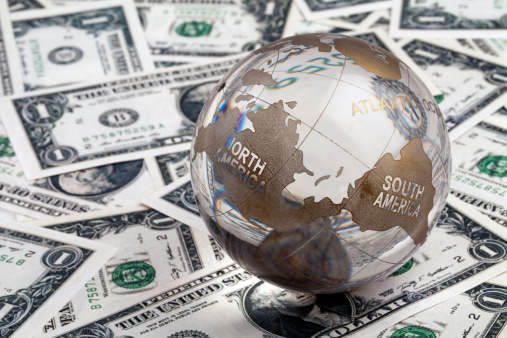
One of the most frightening areas for U.S. investors is international stocks. We are comfortable investing here in the U.S. because we have a sense of the larger scheme of how American society and business operates.
Even the newest of investors understand basic things about how companies operate, what they must report and how they are regulated and taxed.
The moment we move overseas, however, things change. The rules of every country are different. Rules and regulations are all over the place. In countries likeRussia and China, and across the continent of Africa, most investors suspect corruption exists within corporations, making them more susceptible to fraud.
That’s why, when it comes to international exposure, I really just try to use large-cap international ETFs. That gives me plenty of diversity, both geographically and by sector. I simply lack the confidence to invest in individual companies from other countries – and this is even after 20 years of market investing.
Here are three great international ETFs to buy, one for each kind of investor: aggressive, average Joe and conservative.
Aggressive investors may want to look at PowerShares DWA Developed Markets Momentum Portfolio (NYSEArca: PIZ). In this case, we are going strictly with stocks in developed countries like Hong Kong, Italy, Japan, Australia, France, Germany, Canada, Finland, Norway, Portugal, Singapore, Spain and Switzerland. After narrowing it down to those countries, the ETF only goes after those with the highest relative-strength, so that the losers are filtered out. Thus, it’s not really a value-based platform, but as the name implies, one with momentum stocks.
That’s why it has an average price-earnings ratio of 23.2, and a 4.1 price-to-book average. Be ready for a roller coaster. The fund was down 43% in 2008, but returned 23% last year. It’s up 2.5% this year.
But getting back to diversification, the fund only holds 100 stocks. I don’t like how concentrated that it, and the top 10 holdings represent 25% of the fund base. Yet that’s the strategy you are buying into, so enjoy it. The 12-month yield is 1.51%, so it covers the 0.81% expense ratio.
Switching gears to the conservative investor, I’m a pretty big fan of First Trust Developed Markets Ex-US AlphaDEX ETF (NYSEArca: FDT). I like the fund’s very careful approach to choosing stocks.
It takes stocks based on growth factors including recent price appreciation, sales growth and even some value factors like book value to price, and cash flow to price. The stocks are ranked and the top 300 are broken into four groups which are weighted based on score.
Each stock gets an equal weight so as not to expose the fund to too much risk in a single equity. I also love that the the top 10 holdings only make up 8% of the asset base, so the diversification is broad.
Speaking of diversity, it isn’t just geographic diversification that we want, but sector diversity as well. Some 23% of assets are in financials, 19% are industrials, 16% in consumer discretionary, 13% in tech, 5% in utilities, 4% in health care and only 5% in energy.
If you don’t consider yourself to be aggressive or conservative, but the average Joe, then look at Deutsche X-trackers MSCI EAFE Hedged Equity ETF (NYSEArca: DBEF). It is about as broadly diversified an international ETF as you’ll find, with 49% European, 22% in Japan, 9% in Australia, 4% in developed Asia and a smattering elsewhere.
The funds holds over 900 stocks, and is hedged for foreign currency exposure, which has been dragging results of many U.S. companies down the past few months. Even better, only 13% of assets are allocated to the top 10 holdings. Its sector breakdown is devoted to 23% financials, 12% consumer cyclicals, 12% industrial, 11% health care, 7% communications, 6% tech and 5% energy.
Cheap Oil Here to Stay – For Now
Crude hasn’t been this cheap since March 11, 2009. And it’s likely to stay low for a while. OPEC refuses to cut production. And US production is expected to increase – not decrease – an additional 600,000 more barrels a day. The Saudis have played this one wrong – and you could profit from their blunder.
Top analyst Tyler Laundon’s found what he considers the best way to play this new, cheap oil boom.



